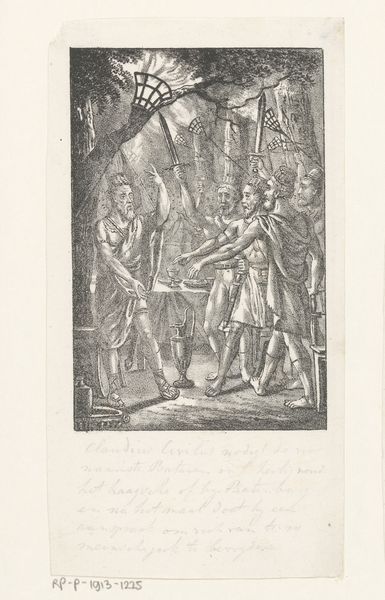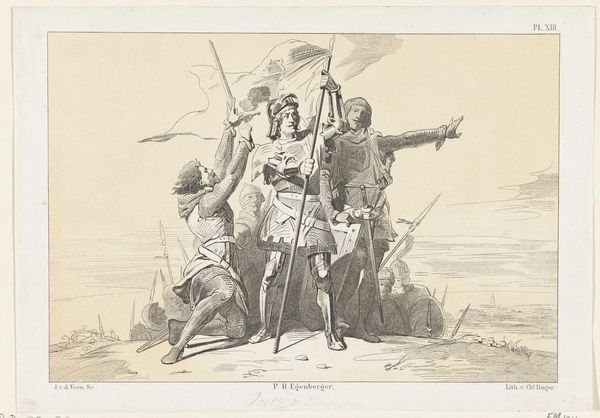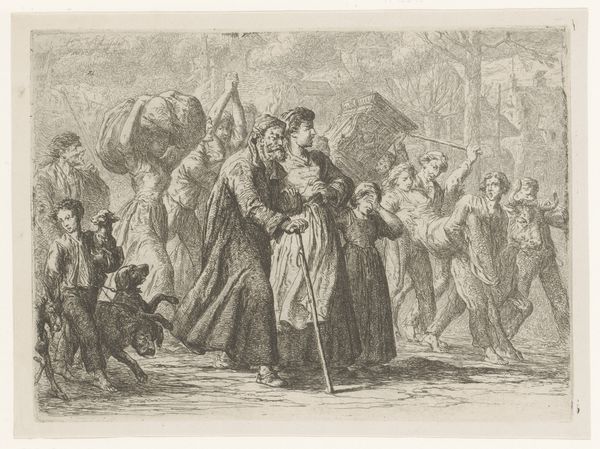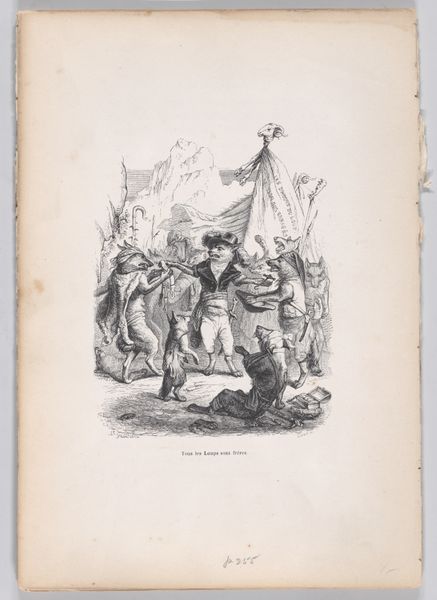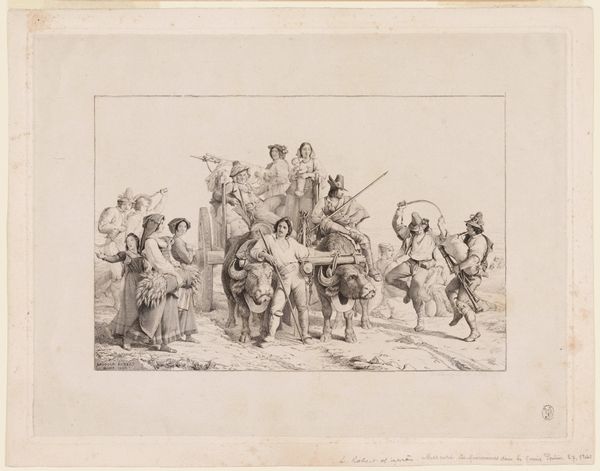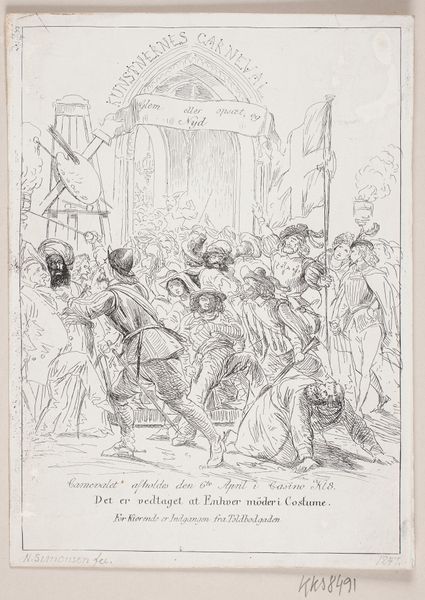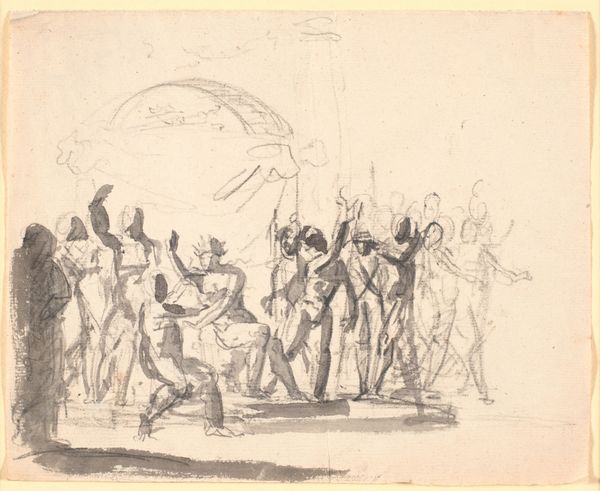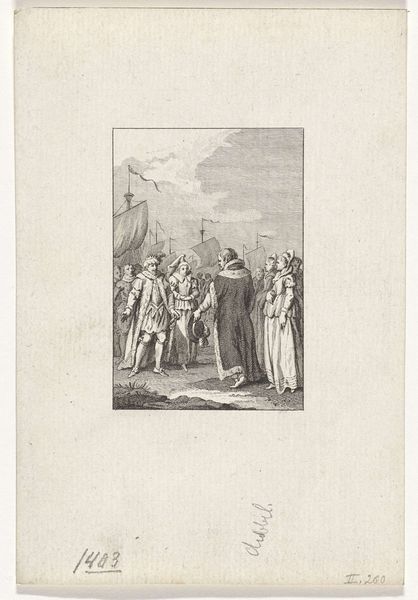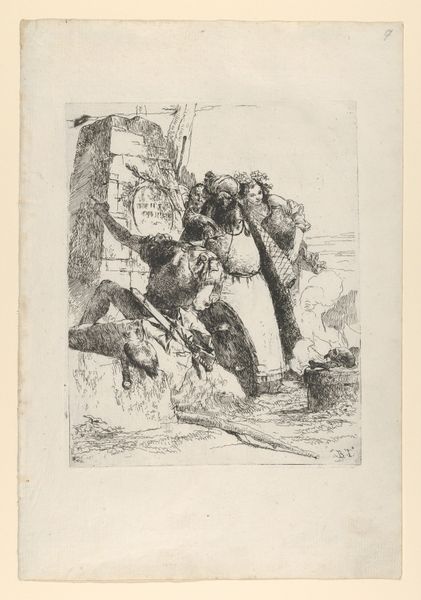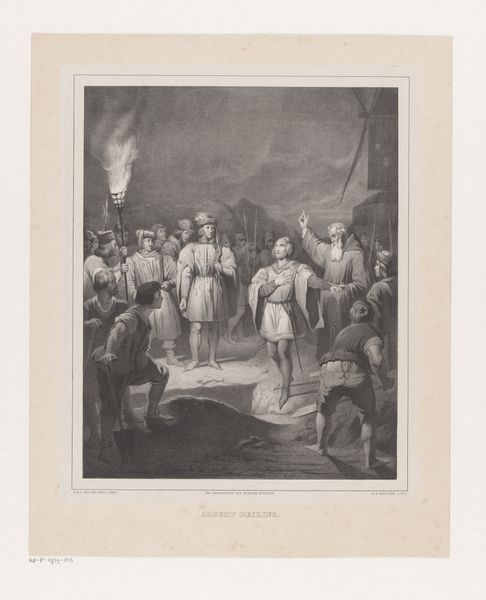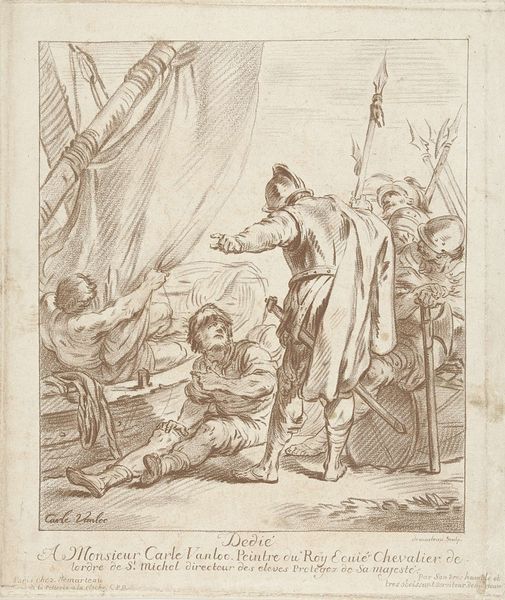
drawing, ink
#
drawing
#
weapon
#
medieval
#
figuration
#
ink
#
line
#
history-painting
Dimensions: height 125 mm, width 105 mm
Copyright: Rijks Museum: Open Domain
Curator: Here we have a drawing by Isaac Weissenbruch, likely created sometime between 1836 and 1912. It’s entitled "Groep soldaten de wapens in de lucht stekend," which translates to "Group of Soldiers Raising Their Weapons in the Air." It's currently housed here at the Rijksmuseum. Editor: The chaotic energy practically leaps off the page. The lines are so frantic, the details blurry, almost as if you’re caught in the middle of the frenzy yourself. The medium being ink creates a dramatic tonal variance that amplifies the raucousness. Curator: It's true that Weissenbruch captured a distinct emotional energy using those precise lines, contributing to the thematic tension within the framework of history painting traditions. The staging and costuming reference medieval period narratives that romanticize a particular version of warfare. It is interesting how these are reflected through the politics of his time. Editor: I appreciate your reading of its politics; I interpret the figures and the weapon themselves foremost, but that chaos is primarily delivered by the starkness of the line work. See how he abandons clean figuration for energetic strokes, especially in the background figures? And how even in the central figures the lines are etched to create a worn effect that might invoke emotional impact on an uneducated viewer. The use of starkly contrasting white negative space also draws my attention, creating the effect of something being highlighted in the overall compositional tension. Curator: While the lines may suggest chaos to a modern eye, that frenetic energy could have reflected the anxieties of a period undergoing immense societal change. Remember that during this period in the Netherlands there was a quest for the creation of a national identity as separate from the other colonial powers; history paintings offered a return to an idealized national, even mythologized, past. It's as much a comment on their present as it is a supposed depiction of the past. Editor: Your insights certainly shift my interpretation, grounding the frenetic energy within its historical moment rather than as a pure formal expression. Still, what a fantastic rendering, I appreciate how it gives an artist so strongly working in this tradition such latitude. Curator: I concur. There’s a valuable lesson in understanding how technical and historical context impact our engagement with a seemingly straightforward piece like this.
Comments
No comments
Be the first to comment and join the conversation on the ultimate creative platform.
